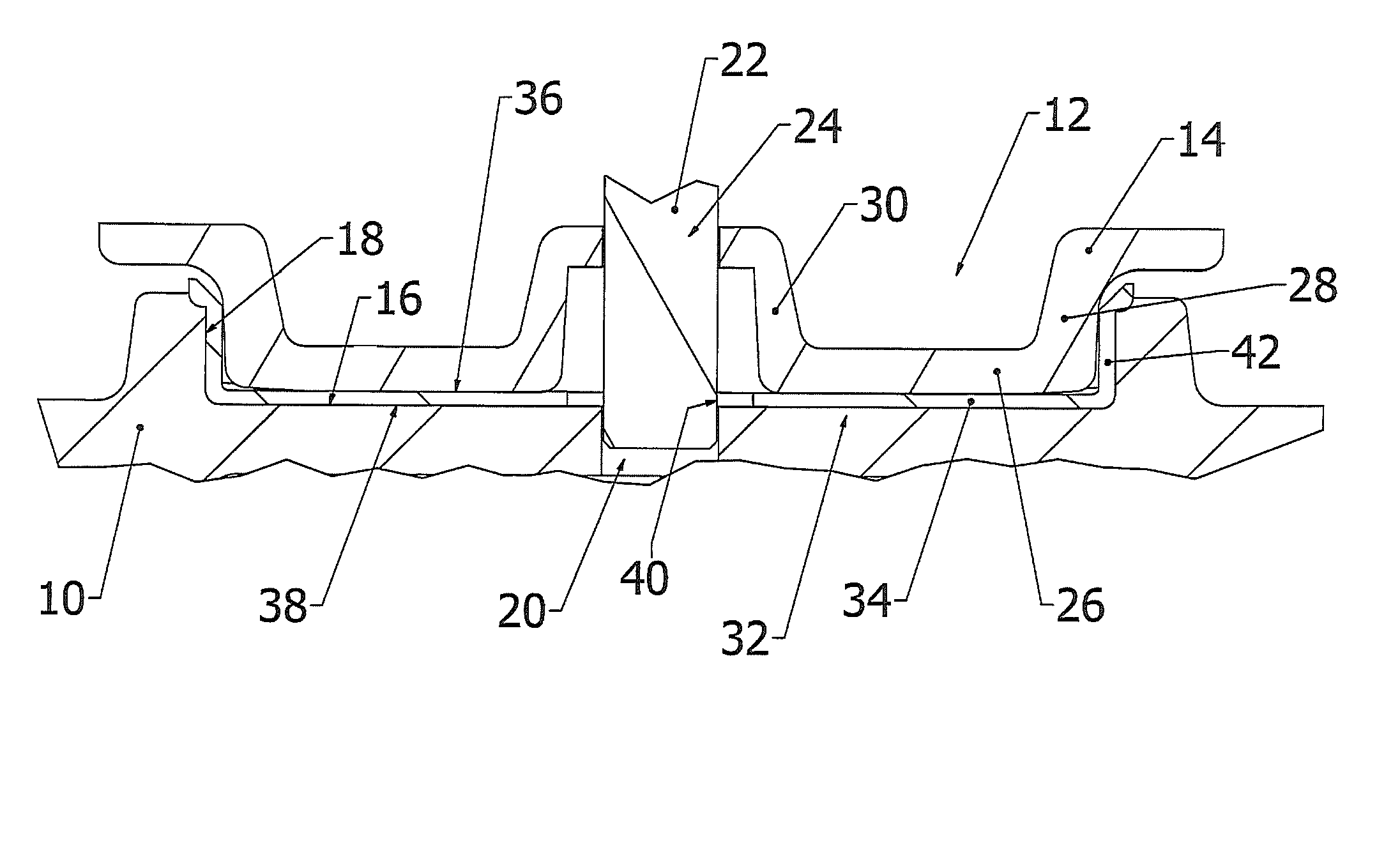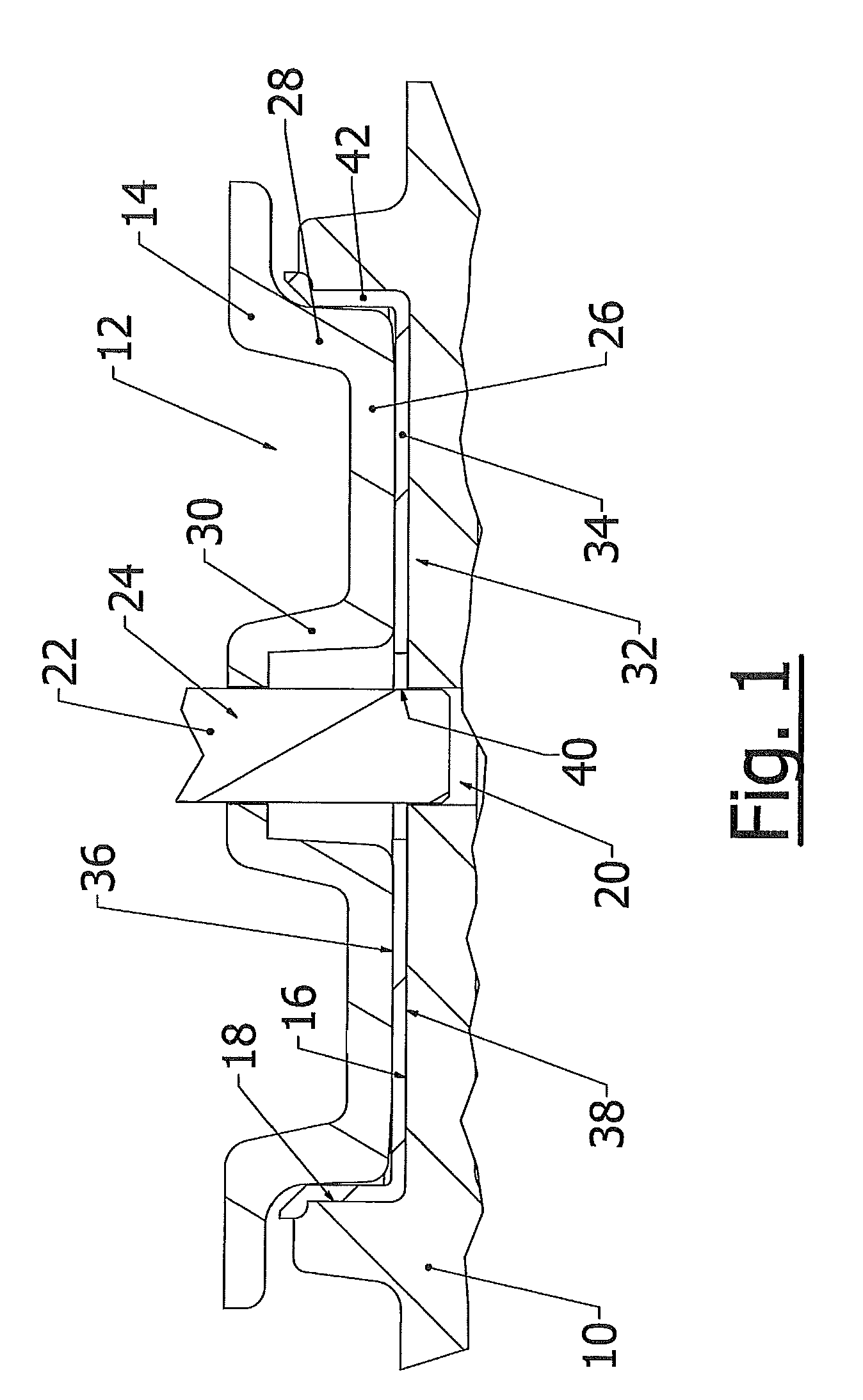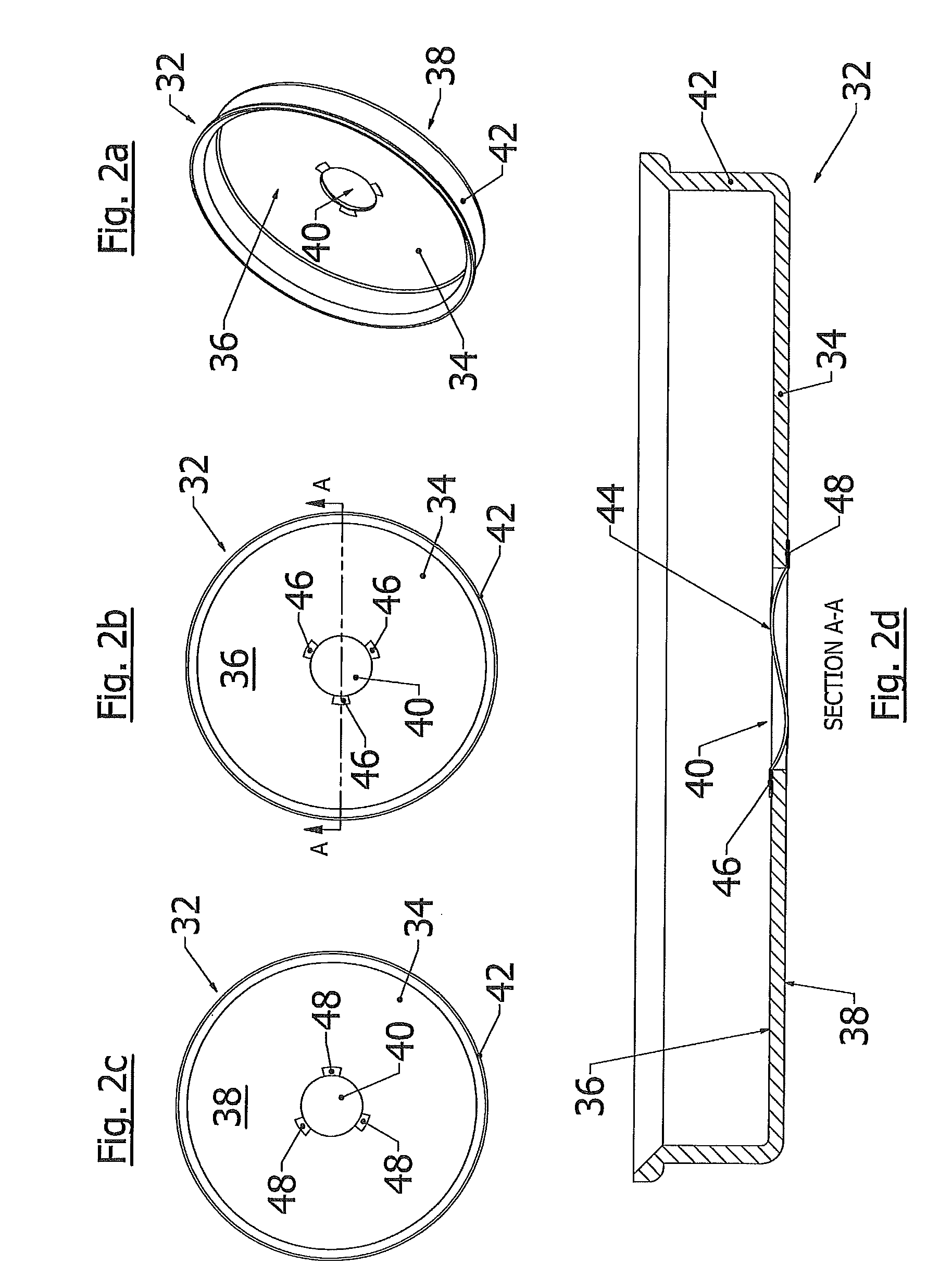Center bowl liner with spring washer conductor
a technology of spring washer and center bowl, which is applied in the field of bowl liners, can solve the problems of no electrical continuity or conductivity between the car and the truck, not without its own problems, and burdensome and expensive, and achieve the effects of reducing the coefficient of friction, preventing static electric charge buildup, and reducing the cos
- Summary
- Abstract
- Description
- Claims
- Application Information
AI Technical Summary
Benefits of technology
Problems solved by technology
Method used
Image
Examples
Embodiment Construction
[0025]As shown in FIG. 1, a standard railroad car typically includes a truck bolster center plate 10 that is attached to or integrally formed with the truck bolster. A conventional truck bolster includes a frame having an axle to which wheels are attached which engage standard railroad tracks (not shown). The truck bolster center plate 10 defines a bowl surface 12 into which a railroad car center plate 14 is disposed. The bowl surface 12 includes a generally circular, horizontal floor base 16 and a generally vertically disposed upstanding side wall 18. The floor base 16 includes a centrally positioned aperture 20 for receiving a center pin 22, often called a kingpin, which extends upwardly through a central bore 24 in the railroad car center plate 14. The railroad car center plate 14 typically includes a horizontal circular base 26 connected to a generally vertically disposed perimeter wall 28, and also connected to a vertically extending tubular wall 30 through which the center pin...
PUM
 Login to View More
Login to View More Abstract
Description
Claims
Application Information
 Login to View More
Login to View More - R&D
- Intellectual Property
- Life Sciences
- Materials
- Tech Scout
- Unparalleled Data Quality
- Higher Quality Content
- 60% Fewer Hallucinations
Browse by: Latest US Patents, China's latest patents, Technical Efficacy Thesaurus, Application Domain, Technology Topic, Popular Technical Reports.
© 2025 PatSnap. All rights reserved.Legal|Privacy policy|Modern Slavery Act Transparency Statement|Sitemap|About US| Contact US: help@patsnap.com



